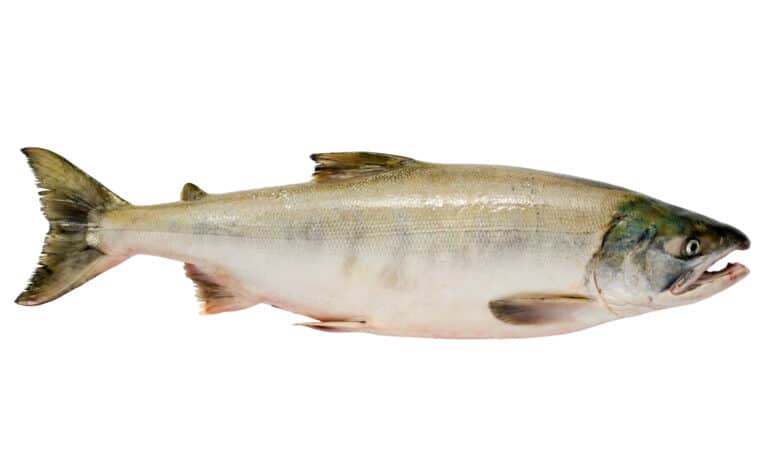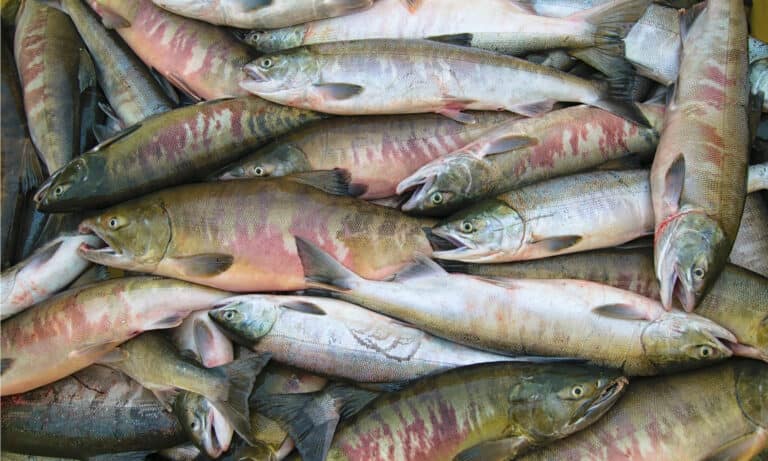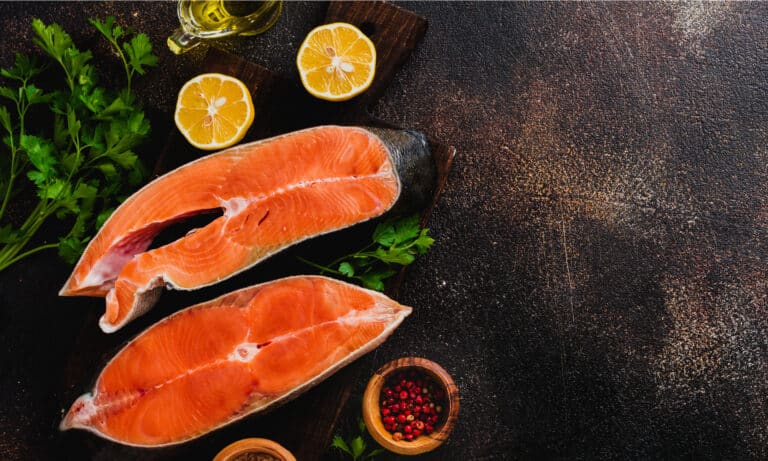Keta Salmon Animal Pictures
Oncorhynchus keta
Advertisement
keta salmon head sticking up out of the water
The keta salmon is a torpedo-shaped fish with a moderately compressed body and shimmering bluish-green scales with black speckles when not in the breeding season. It grows to an average of 23.6 inches with a weight of 9.7 to 35 pounds. The fish has 10 to 14 soft rays on its back, 13 to 17 soft anal soft rays and an emarginate tail fin. When they’re ready to spawn, the males turn dark olive green or black on their back. The rest of their body is grayish red and tiger-striped with black and red, and they have a streak along their side that looks very much like a bleeding gash left by a switchblade. The flesh, as with many salmon, is bright pinkish-orange and high in healthy omega-3 fatty acids.
chum salmon isolated on white background
Keta salmon is also known as chum salmon.
fresh catch of chum salmon
Wild keta are cold-water fish and prefer water that’s between 32 and 75.2 degrees Fahrenheit.
school of chum salmon in the pacific
Keta salmon are mostly found in the Pacific and Arctic oceans.
chum salmon fisherman
Recreational fishermen use light tackle for saltwater and fly tackle for freshwater, though like most Pacific salmon, the chum is usually fished in the ocean since it doesn't eat when it returns to spawn.
Keta salmon being prepared for cooking
The taste of the fish is delicate and mild, and recipes call for it to be poached, pan-fried, baked, broiled, steamed and eaten raw as sushi or sashimi.







